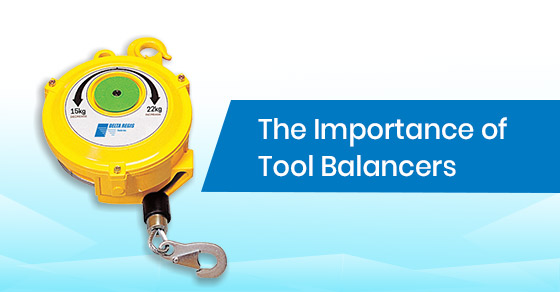Tool Supports
The Importance of Tool Balancers
To enhance productivity and accelerate time-to-market, manufacturers need to find ways to improve their assembly processes. This can be achieved by maintaining a tidy, organized, and ergonomic work area.
Improving the safety of your workforce by reducing or eliminating their exposure to awkward postures, large forces, heavy lifting, and repetition can also boost productivity by preventing potential injuries, fatigue, and costly compensation claims.
Fortunately, there are tools that manufacturers can use to accomplish the above: torque arms and tool balancers in the assembly area. Tool balancers provide easy handling of common fastening tools that would otherwise be hand-operated for long, continuous hours, including electric, hydraulic, and pneumatic tools. These balancers allow operators to position the tools over the work area for proper ergonomic operation.
Many production line problems have been solved by using tool balancers in assembly stations to support the weight of the tool, so the operator doesn’t have to. Some of the benefits of improved operator ergonomics include:
1. Prolonged tool life
Integrating tool balancers in your assembly process protects your tools from accidental drops or impact. In most cases tool balancers not only protect the tool but also prolongs the service life of the tool cables.
2. Greater productivity
Tool balancers always keep the tool at an arm’s reach right above the work area.
3. Low risk of worker’s compensation claims
By reducing the amount of effort required to perform the repeated motion, balancing tools help to reduce worker fatigue and associated injuries from stress or the wrong posture, helping to prevent the financial loss from worker’s compensation claims.
Improving Safety and Performance
Studies show that musculoskeletal disorders resulting from repetitive motion account for about one-third of all workplace injury cases. Ergonomics, which is the study of the workplace, is particularly important for operators working in assembly lines because the tasks they perform usually involve repetitive motions. Workers may be required to fasten hundreds of products at some point in the assembly line.
Tool balancers that suspend the tool above the operator’s workstation and attach it through a retractable cable; can help with supporting the weight of the tool. Operators only need to control the movement of the tool without lifting it, which helps to reduce the risk of fatigue and musculoskeletal injuries.
Getting the Right Tool Balancer for the Job
Tool balancers are divided into two main categories:
1. Retractor style tool balancers
Use a coiled tension spring to retract the tool upwards. This type of balancer builds up tension as the tool is pulled downwards to the workpiece and will retract the tool back to the starting position.
2. True Balancers
Also use a coiled tension spring, however the balancer cable rides on a tapered drum allowing the tool to maintain a constant tension through the entire stroke. This allows the true balancer to be set so that the tool hangs freely in the position it is released until it is manually raised from the work area.
When choosing a tool balancer, you need to specify the load or weight capacity that it can bear, as well as its reach or travel distance.
It is important to select a tool balancer with an appropriate weight range for the tool you are looking to support. connecting a heavier tool than the indicated support weight can lead to injury, damage and/or balancer failure.. When unsure about the right tool balancer specifications, please contact us with any questions..
To learn more about the importance of a tool balancer, call Delta Regis at 1-888-733-3142 or contact us here.

